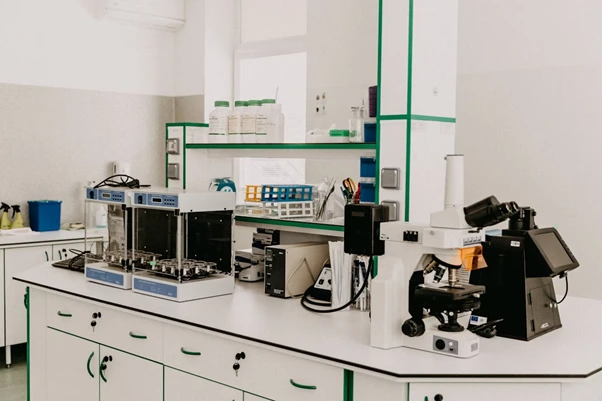HTRF Plate Readers: Driving Innovation in Life Science Applications

Homogeneous Time-Resolved Fluorescence, or HTRF, may sound like a mouthful of technical terms. Fundamentally, it propels innovation in immunology, cancer research, and drug discovery by supplying dependable, superior data that other approaches find difficult to produce.
What is HTRF?
Let's break down that intimidating name into simple parts:
| Feature | The problem it solves | How it works |
|---|---|---|
| Homogeneous assay | Traditional assays often require multiple washing and separation steps. These are time-consuming and increase the risk of error. | Reagents are simply mixed in a single well. The measurement is taken directly from this mix, streamlining the entire process. |
| Time-resolved fluorescence | Normal fluorescence creates high background noise because everything in the sample can fluoresce at the same time when excited. | Uses special probes with a long fluorescent lifetime. The instrument pulses a light, waits for the short-lived background to disappear, and then measures the specific, long-lasting signal. |
How does it work?
- It asks a question: The reader starts by flashing a quick pulse of light, essentially tapping the donor molecule on the shoulder to get its attention.
- It waits for the noise to die down: Here's the brilliant part. Instead of listening immediately, it pauses for a split second. In that tiny moment, all the jittery, background fluorescence: the "crowd noise" of the sample, fades away into silence.
- It listens for the real signal: Only after the room has gone quiet does the reader lean in and listen. Now, it can clearly hear the long, steady signal from the acceptor probe, loud and clear.
By hearing this clean, noiseless message, the researcher gets a perfect answer: did the molecular handshake happen, or didn't it?
The HTRF method is like a special pair of glasses that lets you see something incredibly faint. Without the right reader, it's like taking those glasses off; the magic doesn't work, and you lose that clear vision. This is exactly what instruments like the LUMIstar® Omega are made for. It's perfectly designed to deliver the high sensitivity needed for trustworthy, publication-ready results.
And for a growing lab, the best part is its flexibility. It's like buying a camera you can add better lenses to later. You can start with what you need now and easily upgrade as your research grows and changes.
Key advantages in the lab
HTRF has become a gold-standard technique in many labs because it solves so many practical problems. Its main benefits can be summarized in the table below:
| Advantage | What does it mean for scientists? |
|---|---|
| Homogeneous Format | Faster results, higher throughput, and less manual labor. Perfect for screening thousands of drug candidates. |
| Low Background Noise | More reliable and accurate data. Scientists can trust that the signal they see is real, not just background interference. |
| High Sensitivity | It can detect very low amounts of a target, which is crucial for measuring subtle biological changes or rare molecules. |
| Robust and Reproducible | The assays are less prone to variability, meaning experiments run on Monday will give the same result on Friday. |
| Adaptable | It can be used for a wide range of applications, from studying enzymes to entire cellular pathways. |
Driving real-world innovation
So, where is this powerful duo actually being used? The applications are vast and are actively helping to push the boundaries of medical science.

Drug discovery
This is HTRF's superstar application.
- Target Identification: Researchers use HTRF to find new proteins or pathways involved in a disease.
- High-Throughput Screening (HTS): Pharmaceutical companies can robotically test hundreds of thousands of chemical compounds against a disease target to find a few potential hits for a new drug. The speed and reliability of HTRF make this massive task feasible.
-
Pharmacology: Scientists can determine how strongly a new drug candidate binds to its target, which is critical for predicting its efficacy and dosage.
Kinase assays
Consider kinases to be the industrious traffic controllers within a cell. They control how the cell divides, grows, and functions by deftly regulating the flow of signals that tell other proteins when to move, slow down, or stop.
However, a malfunctioning kinase is like a rogue traffic director, allowing everything to pass through without interruption. Uncontrolled growth, a defining feature of illnesses like cancer, can result from this cellular gridlock.
HTRF assays are extremely useful in this situation. They are the preferred technique used by researchers to observe this cellular traffic in real time. HTRF's ability to measure kinase activity so precisely enables researchers to swiftly discover and evaluate novel medications.
Think of HTRF plate readers not as complex machines, but as incredibly powerful movie cameras for the tiny world inside our cells. They let scientists capture the exact moment when a drug connects with its target or when cells send signals to each other. This clear view helps researchers ask bigger, bolder questions and find answers with amazing precision. As this technology gets even smarter, teaming up with robots and smart software, it's becoming an essential partner in the race to understand diseases and create new life-saving treatments.
